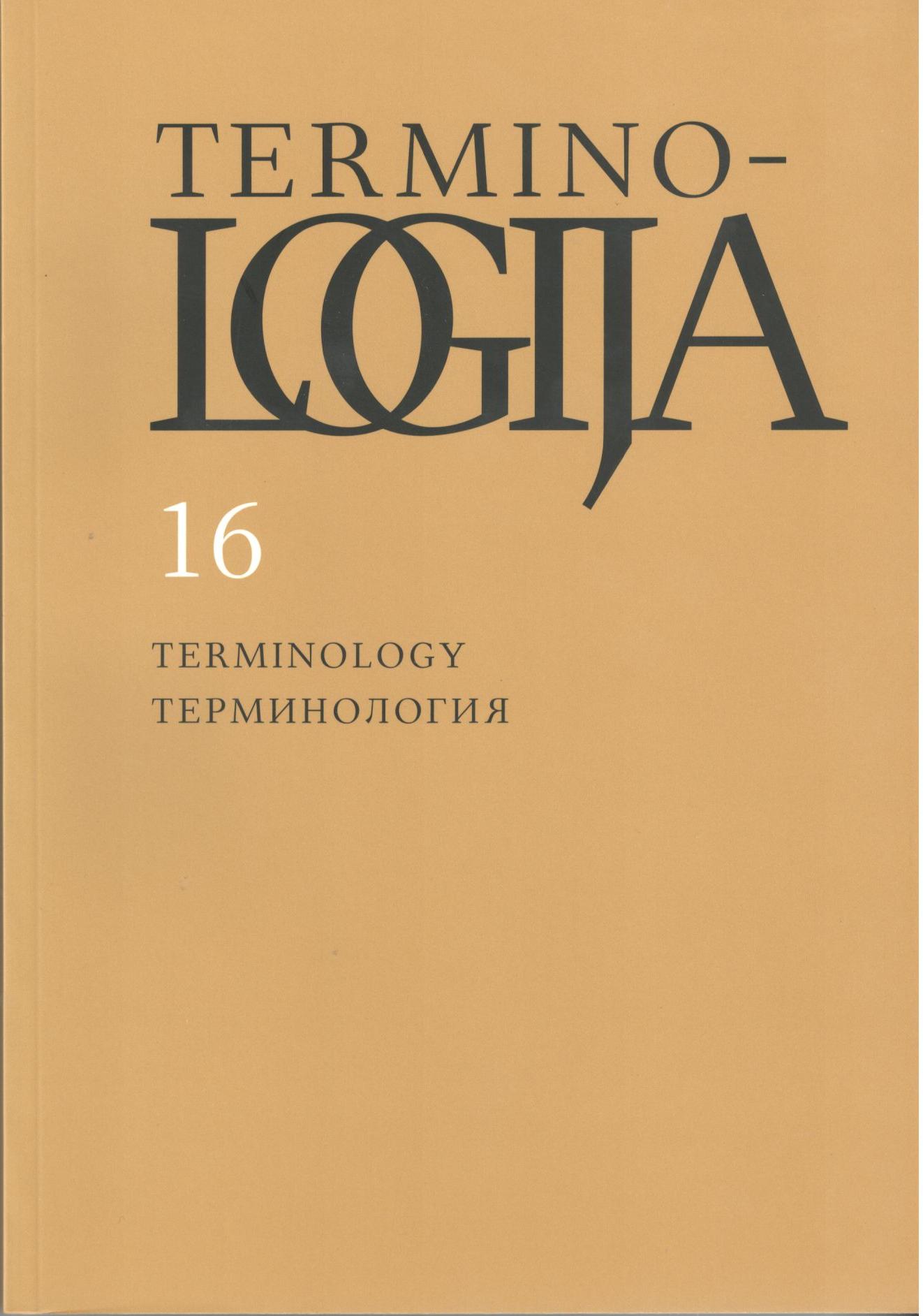Daugiareikšmiai ir homoniminiai statybos liaudies terminai
Polysemous and homonymous folk terms of building
Author(s): Robertas StunžinasSubject(s): Language and Literature Studies, Lexis, Semantics, Descriptive linguistics, Baltic Languages, Philology
Published by: Lietuvių Kalbos Institutas
Keywords: polysemous terms; homonymous terms; terms of building; folk terms;
Summary/Abstract: This article deals with 350 cases of polysemy and homonymy in folk terminology of construction presented in Lietuvių kalbos žodynas (Dictionary of Lithuanian) (LKŽ) and Lietuvių kalbos atlasas (Atlas of the Lithuanian Language) (LKA). Terms with correlation of meanings are treated as polysemous and terms having coincidental phonetic similarity are viewed as homonymous. The absolute majority of terms researched are polysemous. Homonymous terms make up less than 3 percent of terms researched.Polysemous folk terminology of construction consists of terms connected by various relations.The major group of polysemous terms which name similar concepts consists of terms with distinctive semes of purpose (namas ‘dwelling house’ LKA I 34, LKŽe – ‘a separate small building with a cooker to be used in summer’ LKŽe), quality (abarės ‘animal shed’ LKA I 50 – ‘a large cowshed’ LKA I 50), composition (grinda ‘wooden floor’ LKŽe – ‘clay floor’ LKŽe), dependence (krosnis ‘stove for house heating and bread baking’ LKA I 42 – ‘stove in a barn for grain drying’ LKA I 65).Terms with various associative relations make up a big group of polysemous terms. Meanings of terms in this group are motivated by meanings of other terms according to their similarity or logical relation. This group comprises terms having metaphorical or metonymical relations. The subgroup of metonymical terms consists mostly of polysemous terms with whole-part relations (gryčia ‘one end of a dwelling house’ LKA I 34, LKŽe – ‘a whole dwelling house’ LKA I 34). The subgroup of polysemous terms with metaphorical relations consists of ordinary terms and metaphorical terms of building which have similarity of form (čerpė ‘tile for stove building’ LKŽe – ‘niche in the wall of a stove’ LKŽe), purpose (durelės ‘the back door of a dwelling house’ LKŽe – ‘stove door’ LKŽe) or composition (grendymas ‘clay floor’ LKA I 37 – ‘stove floor’ LKA I 43).Polysemous terms with unclear relations of meaning make up another big group. Such terms have a different nucleus of the meaning with similar features of peripheral meaning, which indicate the usage (pamatas ‘foundation log’ LKA I 35 – ‘stones under a wall’ LKA I 35), place (užlangė ‘shelf above a window’ LKŽe – ‘windowsill on the outside’ LKŽe), form (lota ‘bar to press straw when thatching a roof’ LKŽe – ‘board’ LKŽe). Polysemous metaphorical terms have common secondary semes marking exterior similarity (kepurė ‘the last row of logs on all four walls of a house’ LKŽe – ‘hood above cooking stove’ LKŽe), similarity of location (žandas ‘side of a tool’ LKŽe – ‘opening next to a hob of the stove’ LKŽe), similarity of usage (pamatas ‘bottom part of a building’ LKŽe – ‘stove bottom’ LKA I 43) or associative similarity (žirgas ‘pole for roofing’ LKŽe – ‘pole for propping up a drying frame’ LKŽe).Derived homonyms with phonetic congruence of root or stem prevail in the group of homonymous terms: lipinė (< lipti ‘to stick to something’ LKŽe) ‘a small cottage stuck together from various bits’ LKŽe – lipinė ( < lipti ‘to step over, to climb’ LKŽe) ‘a plank or steps for climbing over the fence’ LKŽe. Etymological homonyms are much rarer: pantas (< Latvian pants) „hay storage“ LKŽe – pantas (< pinti 1. ‘to pleach, to weave’) ‘spar connecting rafters of a building’ LKŽe).
Journal: Terminologija
- Issue Year: 2009
- Issue No: 16
- Page Range: 68-92
- Page Count: 25
- Language: Lithuanian

